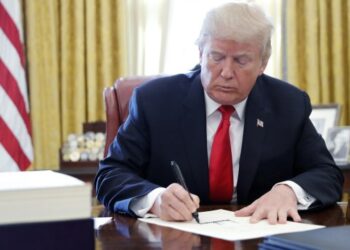Donald Trump started increasing tariffs shortly after he returned to the White House in January, ignoring industry and economist cautions about the potential for economic harm.
Beginning with Mexico, Canada, and China, he next targeted steel, aluminium, and automobiles before enacting a flurry of new levies on commodities from all over the world on what he termed “Liberation Day” in April.
Financial markets were agitated and trading was affected by the proposals. However, Trump swiftly halted his most extreme intentions to allow for 90 days of discussions as concerns grew. The president will keep a close eye on the US economy as he formulates his strategy and the July 9 deadline approaches.
Trump’s ideas included a 46% tax on Vietnamese imports, 20% tariffs on EU products, and hefty 145% duties on Chinese goods. However, on Wednesday, he revealed an agreement that would see the US impose 20% tariffs on Vietnam.
The most immediate impact was felt by the US stock market, which began to decline in February and then crashed in April following Trump’s so-called “Liberation Day” announcement of the full extent of his objectives.
Also Read:
On Friday, Gold Prices Reached a Nearly Two-Month High
Amid Regional Tensions, the Indian Embassy in Israel Issues a Safety Alert































































